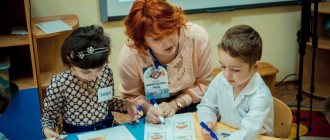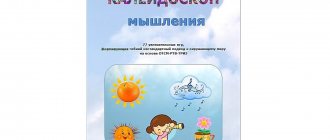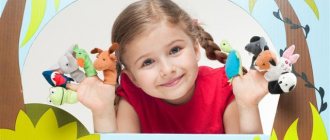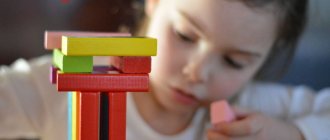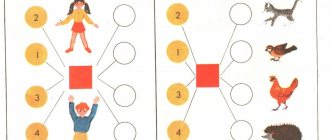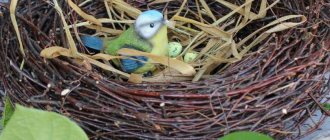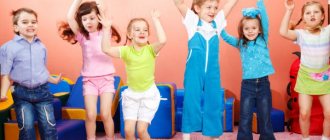Master class “Cognitive and research activities”
MASTER CLASS
Subject:
"Cognitive - research activity"
Prepared by:
Malygina Nadezhda Aleksandrovna, teacher of the MADOU “Kindergarten No. 104”
Target:
Formation of competence of preschool teachers - pedagogical technologies. Organization of educational and research activities.
Participants:
Preschool teachers
Course of the master class:
- Technology.
Cognitive - research activities are actions aimed at cognition (studying something) through research, experiments, experiments. Technology is a sequence of actions using this type of activity. It is applicable in all types of activities (specially organized, joint activities between the teacher and children, independent activities, games, interactions between parents and children). It can be used in all educational areas (cognition of the surrounding world, physical education, productive types: drawing, modeling and design, music and physical education), as a visual or practical method for a more effective understanding of the material being studied.
It is based on the dynamism of the surrounding world (N.E. Veraksy), i.e. transformation of one thing into another, be it the state of matter, shape, size, volume, color, strength and tone of sound, or others. When exploring something, we deliberately, that is, purposefully transform one thing into another. Moreover, what was an experiment the first time will subsequently be the application of the experience gained in this type of activity. A distinctive feature of research activities, whether experiments or experiments, is the presence of a problem. The work is carried out according to a certain algorithm.
Algorithm of actions for carrying out research:
Problem – goal – hypotheses (search for solutions) – hypothesis testing – result (+, -) – conclusion.
Let's consider FEMP. Areas of application of research activities:
- Measurements with conventional standards of liquids, bulk substances, linear parameters;
- Comparison of volume, weight, length, shape;
- Counting using one analyzer (vision, hearing, touch) or excluding one of them;
- Independence of quantity from location;
- Comparisons of multiple objects;
- Volumetric forms, developments.
The goal of the teacher
will be - to introduce, teach methods of action...,
the goal of children
is to discover methods of action.... Actions depend on the goal. (Pour cereal from a bowl into a glass - an action. The goal is to pour it. Check how full the glass is? The goal is to measure the level of filling of the glass with cereal.) For what? The goal comes from the problem.
Recommendation:
Change conventional measurements so that there is no fixation on the measurement as a standard. A conventional measure is what is at hand at the moment.
Levels of experimental activity:
- The teacher himself sets a goal, puts forward a hypothesis, suggests and demonstrates methods of implementation.
- The teacher helps set a goal, accepts the children’s hypotheses, supplements as necessary, and in joint activities they obtain a result and draw a conclusion.
- According to the goal set by the teacher, or independently, children independently implement the hypotheses and draw a conclusion.
- Demonstrated techniques and methods
(ways to achieve goals). Research methods and techniques help not only to collect facts, but also to check them, systematize them, identify non-random relationships and determine causes and effects.
| Techniques: | Methods: |
|
|
- Lesson with demonstration of techniques.
Let's consider the topic “Familiarizing children with conventional measures for measuring the volume of bulk solids”
(senior preschool age).
Target:
Introduce and teach methods for measuring the volume of bulk solids using a conventional measure, comparing volumes of bulk solids.
Tasks:
- To teach how to record quantitative calculations using counting material;
- Fill the conventional measure with the same substance when measuring;
- Lead to the use of conventional measures of equal volume when making comparisons.
Materials and equipment:
Demonstration material: 2 birds, a wise owl, 2 feeders of different shapes and sizes with equal amounts of grain;
Lab. dishes: 2 identical plastic cups + 1 other, felt-tip pen, 2 bowls of different sizes, 2 identical spoons, 1 large and 1 small spoon, board.
Handout: counting sticks.
The situation played out:
2 birds argued among themselves whose feeder had more grain.
The wise owl gives advice - check.
Motivation:
Help the birds resolve their dispute.
Problem:
How to measure?
Proposed hypotheses
that children can offer (all proposed options are accepted, including paradoxical ones):
- Count the grains;
- Weigh the contents of the feeders;
- Pour from the feeders into 2 cups and compare the level of grain;
- Transfer with spoons and count the number of spoons;
- Pour from one feeder into a cup, mark the level with a felt-tip pen, then from another and compare.
Testing hypotheses
(discussion of possible implementation):
- There are a lot of grains - it will take a lot of time and you can make a mistake in counting. This can be done later. Examine and compare the grains in the feeders - the seeds are larger than barley grains - a comparison by quantity will be incorrect.
- The comparison will be very accurate, but there are no scales at the moment. Find a scale and check at another time.
- It will be inconvenient to pour from the feeder into cups - you can spill it. It’s more convenient to pour into bowls and spoon into cups, and at the same time count the number of spoons.
On behalf of the birds, deliberately provoke the choice of spoons of different sizes (for measuring).
Clarification of methods and distribution of work
(discussion):
- How to get the job done faster? Divide into 2 groups. Measure from two feeders at once.
- One will measure, the other will count.
- How to collect grain at how much? A full spoon, the same way every time.
- How can you count so as not to make a mistake in the calculation? Use counting sticks.
Practical work.
Analysis and discussion of results:
- There are equal amounts of grain in the cups.
- The number of spoons measured varies. Why? Spoons of different sizes.
Conclusion:
Use the same spoons. Check.
- Use one cup marked with a felt-tip pen to check the previous comparison. Test the hypothesis.
Analysis of the results of the independence of volume from the shape and size of dishes (feeders) on behalf of birds. Wise owl - Have you checked? We checked - equally. – Peck on your health and treat others and remember: IF THERE IS A DISAGREEMENT ABOUT SOMETHING, YOU NEED TO CHECK!
- Practical work:
independent work of students. Cards for determining the presence of elements of research and experimental activity in a fragment. Prove.
Cards for practical work:
For the game today we will need 2 ropes - long and short. Here they are. Show 2 balls of ropes of different lengths and thicknesses. Question for children: Which ball has the longest rope? Which one is short? (Answers). How to find out? (Children's suggestions). Unwind and compare. Denote in words. Rewind again. Question: What is the current length? Which one is short? (Answers) How did you guess? (Answers) Why then are the balls of the same size? (Answers) Consider and indicate in words the thickness of the ropes. What are ropes made of? (Answers) Where is there more thread in a thick or thin rope? (Answers) Verbal designation. For the game we need a snake and a gate. Which rope looks like a snake? What rope can you use to build a gate, and how? (Answers) Construction of gates. A game. |
Fairy-tale situation: Ivan Tsarevich and Vasilisa the Wise are fleeing from Baba Yaga. Baba Yaga is catching up. Vasilisa the Wise advises Ivan to throw “magic jars” of substances behind his back. (A jar of water - a wide river, with grain - a thick forest up to the sky, with a cube - a steep mountain, with air - thick fog), but you can’t open the jars - the magic will be lost. Which bank contains what? (water, grain, cube, air). How to determine without opening the jars? Is it possible to? Why? How? |
Determine the cans by weight: the heaviest, the lightest, without touching the cans. If: the heaviest one is to the right of the jar with a blue lid, and the lightest jar has a non-red lid. Is it possible to? Why? How? What could be inside if all the jars are full? |
To get to the treasure, you need to pick up the key - the code to the safe (door) with the digital dial 613527 by quantitative calculation using bags of buttons (beans). (Familiarization with receiving an invoice by touch). How? |
Let's work as wizards: Is it possible to turn a HOUSE into SMOKE, a HAND into a RIVER, etc.? How? Dependence of the sound typing of a word and an object. |
Ivan decided to free the captives from captivity at Koshchei. I reached the door to the dungeon. On the door hangs an enchanted bottle with a treasured key inside, and water at the bottom. There was nothing Ivan could do to break the bottle or open the cork. Then he called Vasilisa the Wise. She gave him advice. Ivan quickly completed the task, took out the key, opened the door and released the prisoners. What did Vasilisa advise Ivan? Hypotheses. Demonstration of experience in converting water into steam. |
The grandmother decided to give her granddaughter a gift. Over the phone, she asked to measure the length of the room in steps, knitted a runner and brought it to her granddaughter. Was she very upset to see that the path was longer than the room? Why did this happen? Prove it. |
The children drew a cube from life. They got these drawings. Everything was drawn correctly. What did the cube look like? Why do you say that? Petya Vasya Kolya Lena Olya |
- Experimental activity through a problem.
Since the educational sections are “blurred” - a problem solved sometimes raises another (for example, grain is used as food for birds, where does the grain come from? - it grows on ears of corn. Let’s move on to the “cereals” section. That is, we moved from the “birds” section to the “ cereals"). By posing a new problem, you can complete the session of organized activity. - Reflection.
Answers to questions from listeners. Discussion on the results of joint activities.
